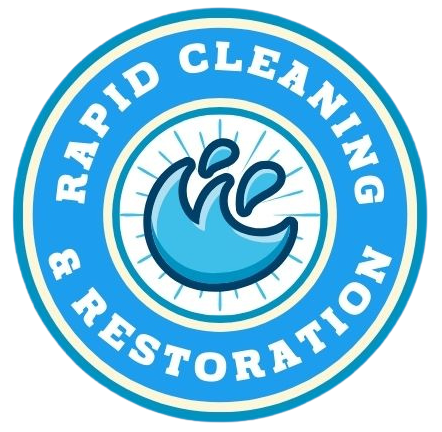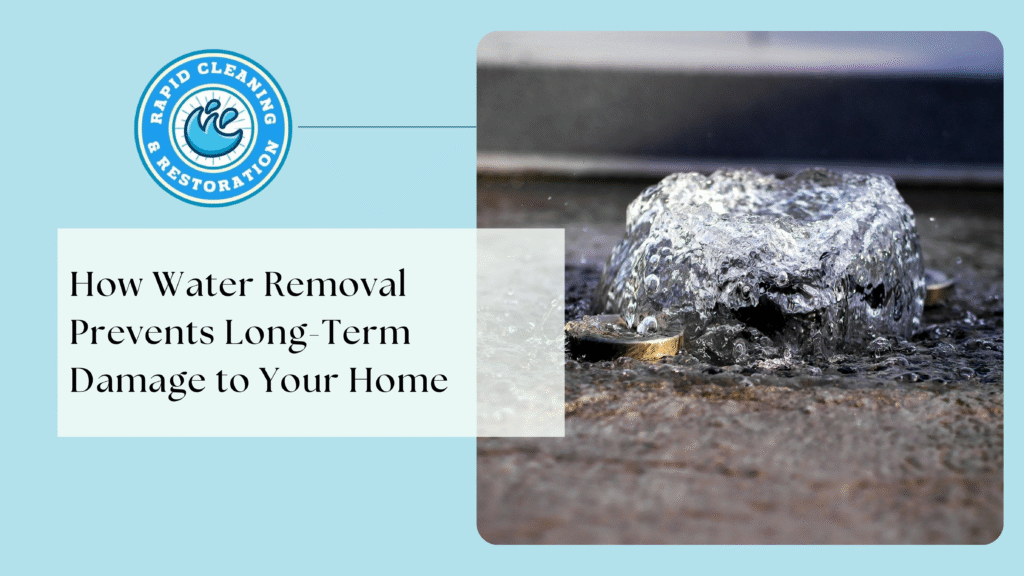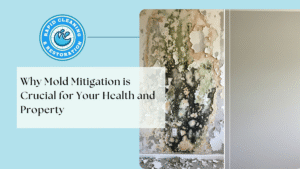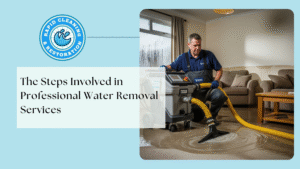Water damage is one of the most destructive and costly problems homeowners can face. Whether caused by flooding, a burst pipe, or a slow leak, excess moisture can wreak havoc on your property if not addressed quickly. Timely water removal is crucial, not just for cleanup but for protecting your home from structural damage, mold growth, and costly repairs down the line.
In this guide, we’ll explore how proper water removal protects your property, the long-term consequences of neglect, and best practices for handling water emergencies.
Why Water Removal Is So Important
Water may seem harmless, but once it infiltrates your walls, floors, or foundation, it begins causing damage immediately. The longer water sits, the more extensive and expensive the damage becomes.
Key Risks of Delayed Water Removal:
- Mold and mildew begin growing in as little as 24–48 hours
- Structural weakening of wood, drywall, and insulation
- Warped flooring and crumbling foundations
- Pest infestations due to excess moisture
- Electrical hazards from water contact with outlets and wiring
By removing water promptly and thoroughly, you can minimize these risks and avoid thousands of dollars in repairs.
Common Sources of Water Damage
Understanding the causes of water intrusion helps you act faster when it happens. Some of the most common sources include:
- Burst pipes and plumbing leaks
- Appliance malfunctions (washing machines, water heaters)
- Roof or window leaks
- Basement flooding due to heavy rain
- Sewer backups
- Poor drainage or clogged gutters
Each type of water intrusion requires a specific approach to effective removal and mitigation.
Step-by-Step: How Water Removal Prevents Long-Term Damage
1. Stops Mold Before It Starts
Mold spores are everywhere, and they thrive in damp, dark environments. Once water enters your home, mold can start growing within 24–48 hours, spreading rapidly and damaging walls, carpets, and furniture.
Water removal cuts off the moisture supply, preventing mold from taking root. Professional drying equipment, like dehumidifiers and air movers, is often used to ensure thorough drying.
2. Protects Structural Integrity
Water can weaken wooden support beams, cause drywall to crumble, and even crack concrete foundations. Over time, this structural damage compromises your home’s safety and value.
Prompt water extraction reduces saturation and prevents these materials from deteriorating. Inspections after removal help identify what may need repair or replacement.
3. Preserves Flooring and Carpets
Carpet, hardwood, and laminate flooring absorb water quickly. Without swift action, they can warp, discolor, or develop odors. In many cases, flooring must be torn out if left wet for too long.
Professional water removal teams use specialized tools like extraction vacuums and drying mats to salvage flooring when possible, saving you money and hassle.
4. Eliminates Odors and Toxins
Stagnant water and damp materials create a musty odor that permeates your home. Worse, standing water can contain bacteria, sewage, or chemicals that pose health risks.
Removing the water fast and disinfecting affected areas prevents foul odors and neutralizes toxins. This is especially important in flood situations involving gray or black water.
5. Reduces Insurance Claim Costs
Homeowners’ insurance typically covers water damage, but only if you act quickly. The longer you wait, the more damage accumulates, leading to higher claims and potential disputes with your insurer.
Early water removal reduces the total extent of the damage, resulting in faster claim approvals and less out-of-pocket expense.
DIY vs. Professional Water Removal
When DIY Is Okay:
- Minor leaks or spills
- Quick cleanup with towels, mops, or wet/dry vacs
- No signs of structural damage or mold
When to Call the Pros:
- Water saturation across large areas
- Contaminated water (sewage or flood)
- Water has been present for more than 24 hours
- Visible mold or damage to walls and flooring
Restoration professionals use commercial-grade equipment and thermal imaging to ensure every trace of moisture is gone, something DIY methods can’t always guarantee.
Tips for Preventing Future Water Damage
- Inspect plumbing regularly for leaks or corrosion
- Clean gutters and downspouts to avoid roof overflow
- Seal windows and doors to block rain intrusion
- Install a sump pump in flood-prone basements
- Use water sensors and automatic shut-off valves for early detection
A little prevention goes a long way toward avoiding future headaches.
Final Thoughts
Water damage isn’t just about wet floors; it’s a serious threat to your home’s foundation, air quality, and long-term livability. Fast, effective water removal is the first and most important step in protecting your investment and health. By acting quickly and partnering with experienced professionals when needed, you can stop water in its tracks and prevent it from becoming a long-term disaster. Contact us today!





